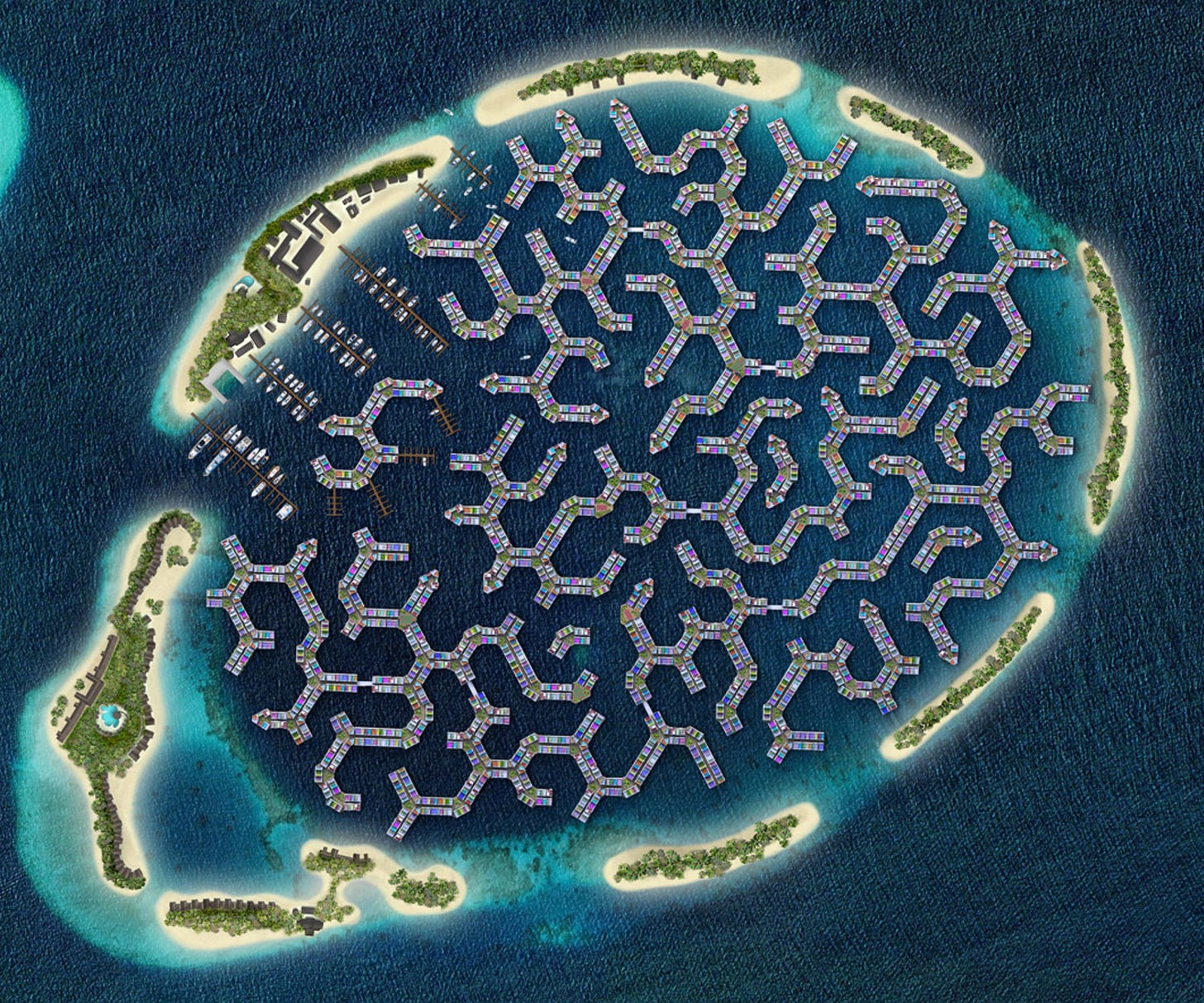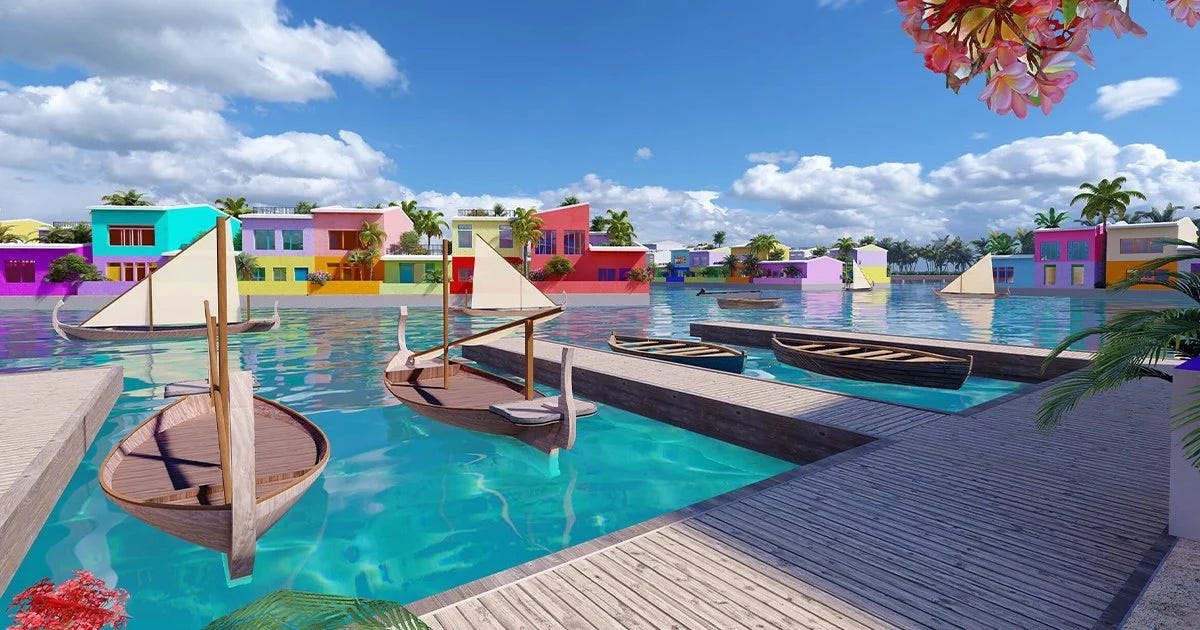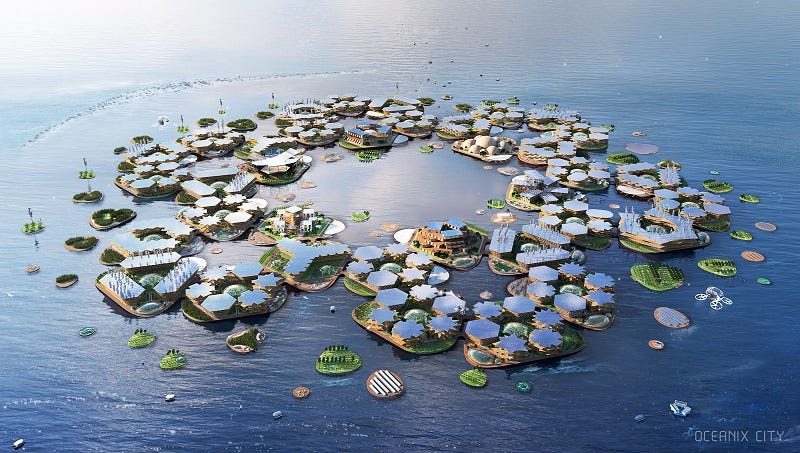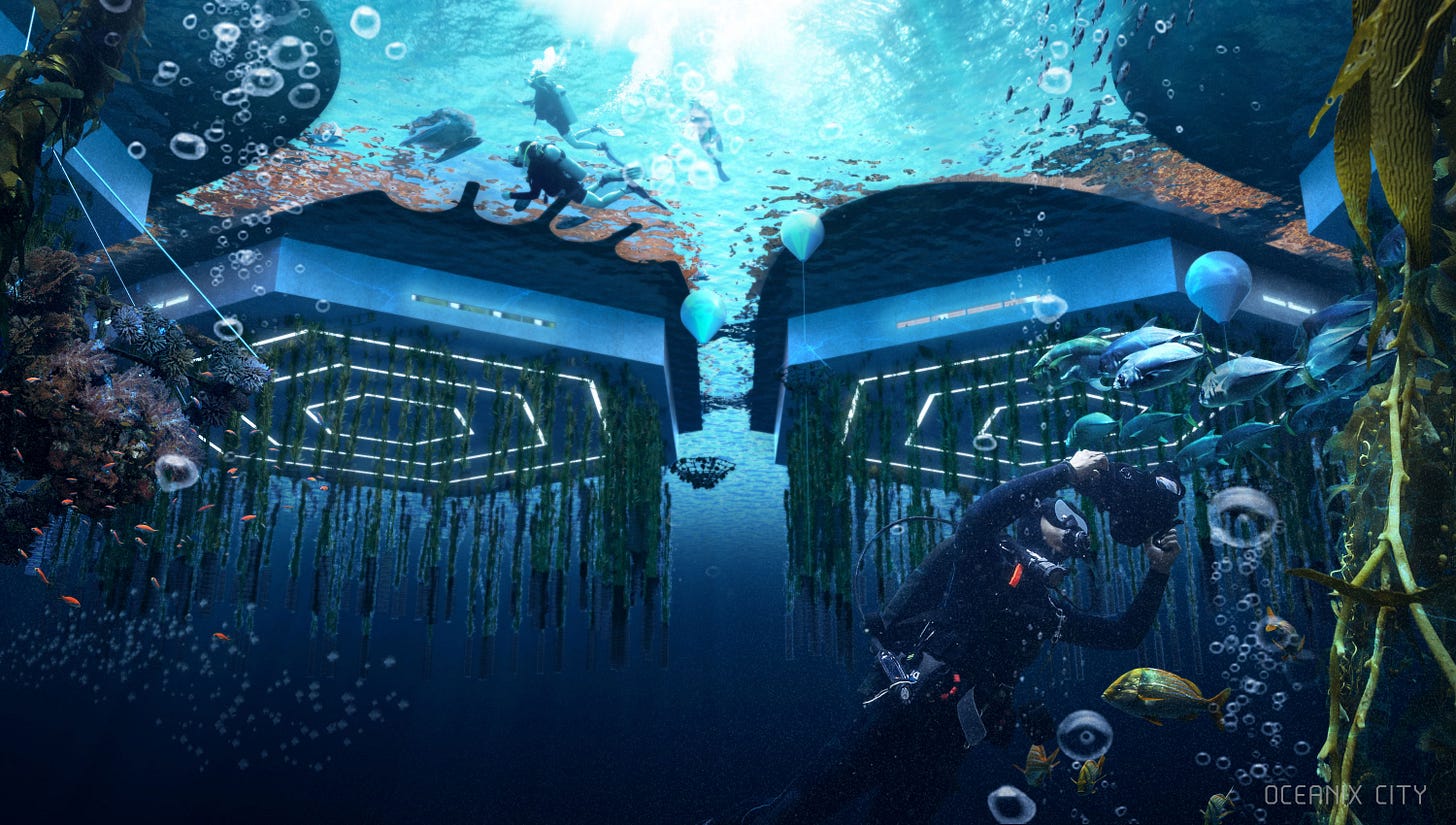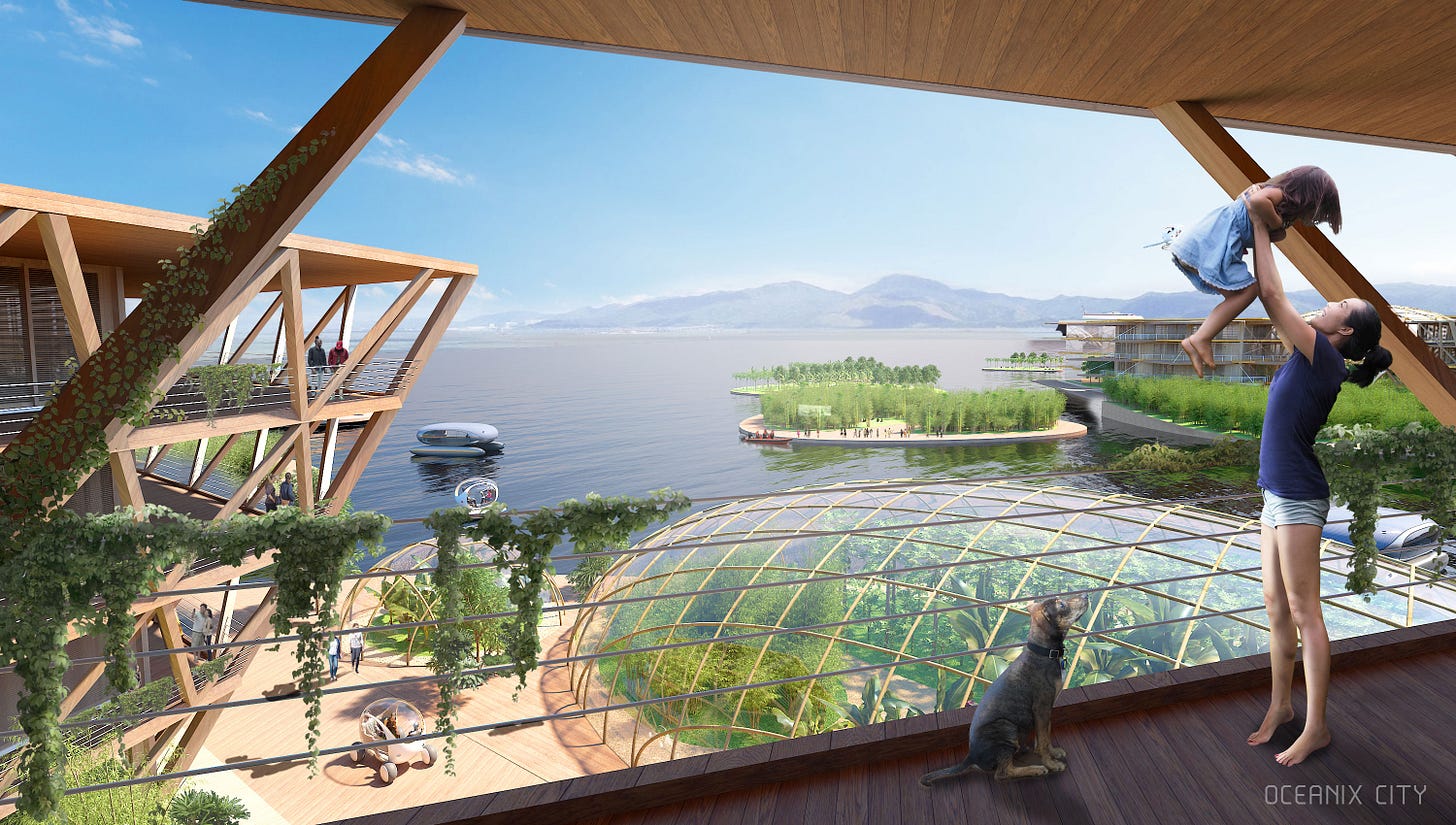Floating, floundering, and flirting with the future
The progressive, squeaky clean, sunny and green temptation of floating cities
What will the future look like? IPCC reports, climate activists, and your energy bills are screaming about an altered world.
But how unrecognizable will that world be?
Should we be imagining the mythical city of Atlantis, which survives and thrives under the sea? Or will humanity have to hack it in the desert world of Mad Max? Sci-Fi offers a lot of material, but infrastructure is already building the future; and there’s one apocalyptic challenge that engineers and dreamers are having an especially fun time with: sea-level rise.
Sea-level rise is one of the primary consequences of climate change. Serious flooding already affects 1.81 billion people, according to the World Bank. Sea walls, dams and dykes have historically been the solution to fighting off the water, but as our coasts diminish and entire island nations risk being submerged, experts are finding ways to live with the water, rather than battle against it.
One solution is to float.
Much of the design and technology is coming out of the Netherlands, which has had to fight flooding since people started trying to build homes there in the 1000s due its flat, low-lying geography. The Netherlands already boasts a small floating neighborhood in Amsterdam and it has aptly constructed the Global Center on Adaptation as the world’s largest floating office in Rotterdam.
Dutch influence has spread throughout the world, and homes and neighborhoods are scaling up into entire cities. Two of the most exciting plans, both scheduled to go under construction in 2023, are in the Maldives and South Korea — though there are others in the works.
While floating technology is exciting, flashy, and promising, there are at least two complicating factors. The first is that all existing inhabitable floating infrastructure is anchored to land and protected by natural barriers like lagoons. The second factor is more immediate, more political, and much less discussed: The residents of these cities are likely to be wealthy and the process to decide residency is likely to be exclusive.
It can be easy to get wrapped up in the sparkly 3D renderings of these solutions, but as they become more realistic, more practical conversations about the governance, accessibility, and scalability of floating cities need to emerge. Otherwise, they risk becoming yet another offshore haven for loose laws and deep pockets.
The Maldives Floating City, which is set to begin in 2023, will be made up of 5,000 lego-like housing units all linked together by walkways. The city will be laid out in hexagonal segments — an ode to the geometry of local coral — and these segments will be tethered to the floor of a lagoon.
The city is advertised as a solution to climate change but each house is likely to sell for far beyond what a local fisherman makes in a year. The average annual salary for a Maldivian fisherman is USD$746.82. The price for these houses will be USD$250,000.
It seems unlikely the government ever meant for these homes to go to locals. At the bottom of the official Maldives Floating City web page is the heading, “Residence Permit,” which says “foreign buyers of a house in Maldives Floating City can apply for a Residence Permit in the Maldives.” There is also a prominent button on the top of the landing page where anyone can go and register their “Expression of Interest.” Two potential boxes to check for this interest are “holiday house” and “investment property.”
It’s hard to imagine how this can be a climate solution if it’s serving as a “holiday home” or “investment property” to foreigners while remaining completely inaccessible to the local people whose islands are disintegrating by the second.
The second project, Oceanix Busan, will be just a mile off of South Korea’s southeastern coast. Starting with just three triangular platforms hosting 12,000 people, the goal is for it to expand into a hexagonal city of more than 20 platforms.
Oceanix City was unveiled by BIG-Bjarke Ingels Group and Samsung Group at the UN Roundtable of Sustainable Floating Cities in 2019. The UN agreed for it to be a prototype for sustainable floating cities. But beyond the fact that it’s floating, the city is also set to be a workshop for every form of sustainable-living technology.
Oceanix will have everything a regular city would need: Schools, medical care, research institutions. Energy will be entirely from renewable sources, the underside of the floating platforms will be used for habitat regeneration and food production, and small floating pods called hydroponic taxis will provide transportation.
Special solar panels that will harvest water out of air humidity and up to 32,000 square feet will be dedicated to crop cultivation on each grouping of platforms. Food will be generated using outdoor and indoor farming, aeroponics (growing plants in the air without soil), aquaponics (growing plants in the water), and underwater 3D ocean farming. This is all to be completed by 2030.
The sheer number of innovations leaves you breathless, but most of these technologies remain in their early stages.
The question now — well the question that helps us figure out the next question — is whether these floating cities should be treated as real urban solutions or just as technology laboratories. If the former, a lot of questions remain about the funding and cost of living. There is also no public information regarding governance or who will be invited/allowed to live there.
Oceanix City didn’t respond to a request for comment regarding these questions.
If the latter, then is this the most efficient use of money and resources to try out these solutions?
As we start digging into the field of floating technology, It’s easy to get swept up into the culturally progressive, squeaky clean, sunny and green moment of an AI-rendered Maldivian floating city.
But we also aren’t wrong to take this future seriously — floating cities are coming. They are small and seemingly exclusive and we are still very much at the beginning of this journey.
We’re still just flirting with the idea, but in the new year, construction will begin and we will need to start asking the hard questions.

